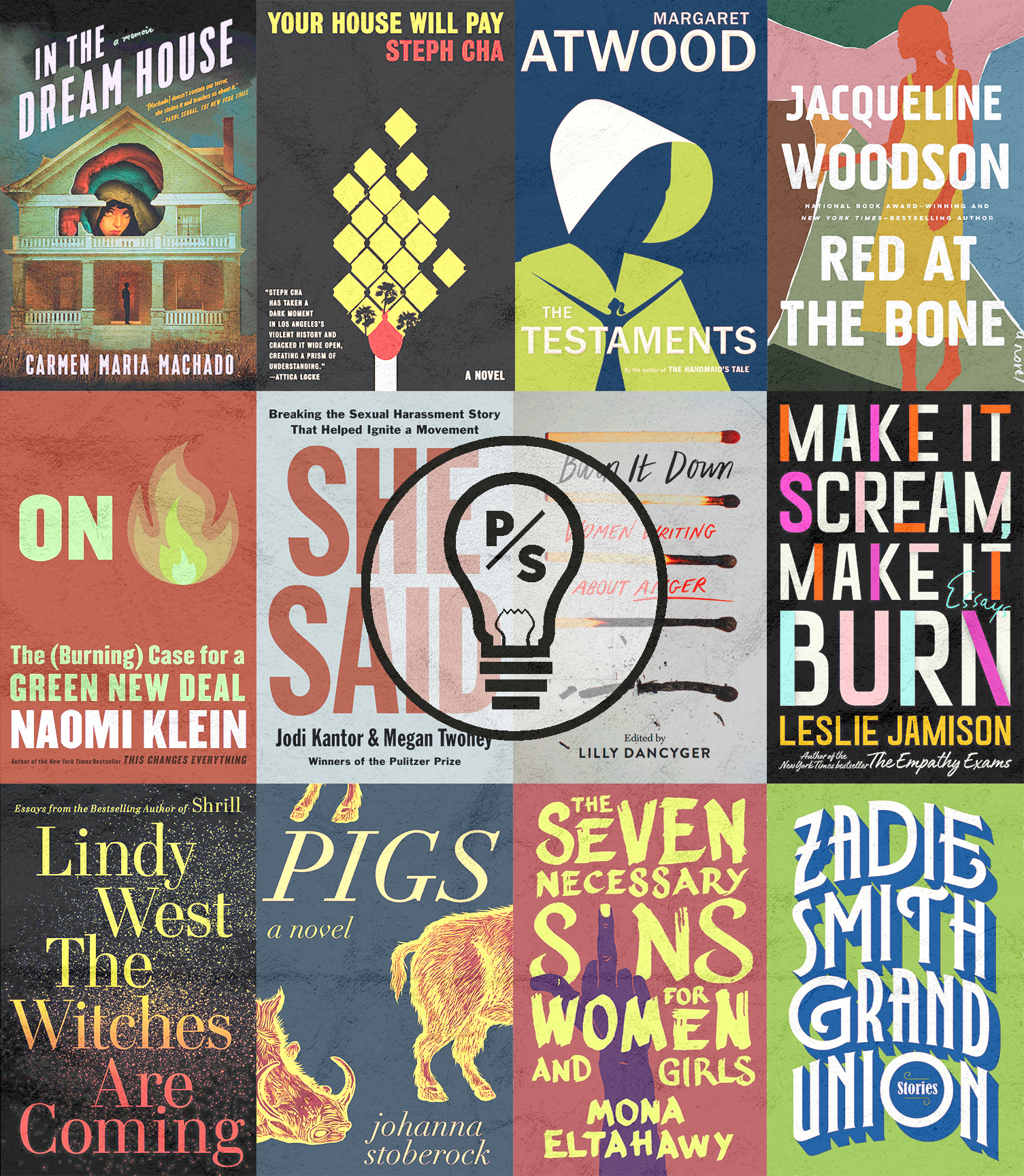
Welcome to our fall books preview. While Pacific Standard won’t be around in the fall, these books will, and we encourage you to read them! —Ted Scheinman

September 3rd
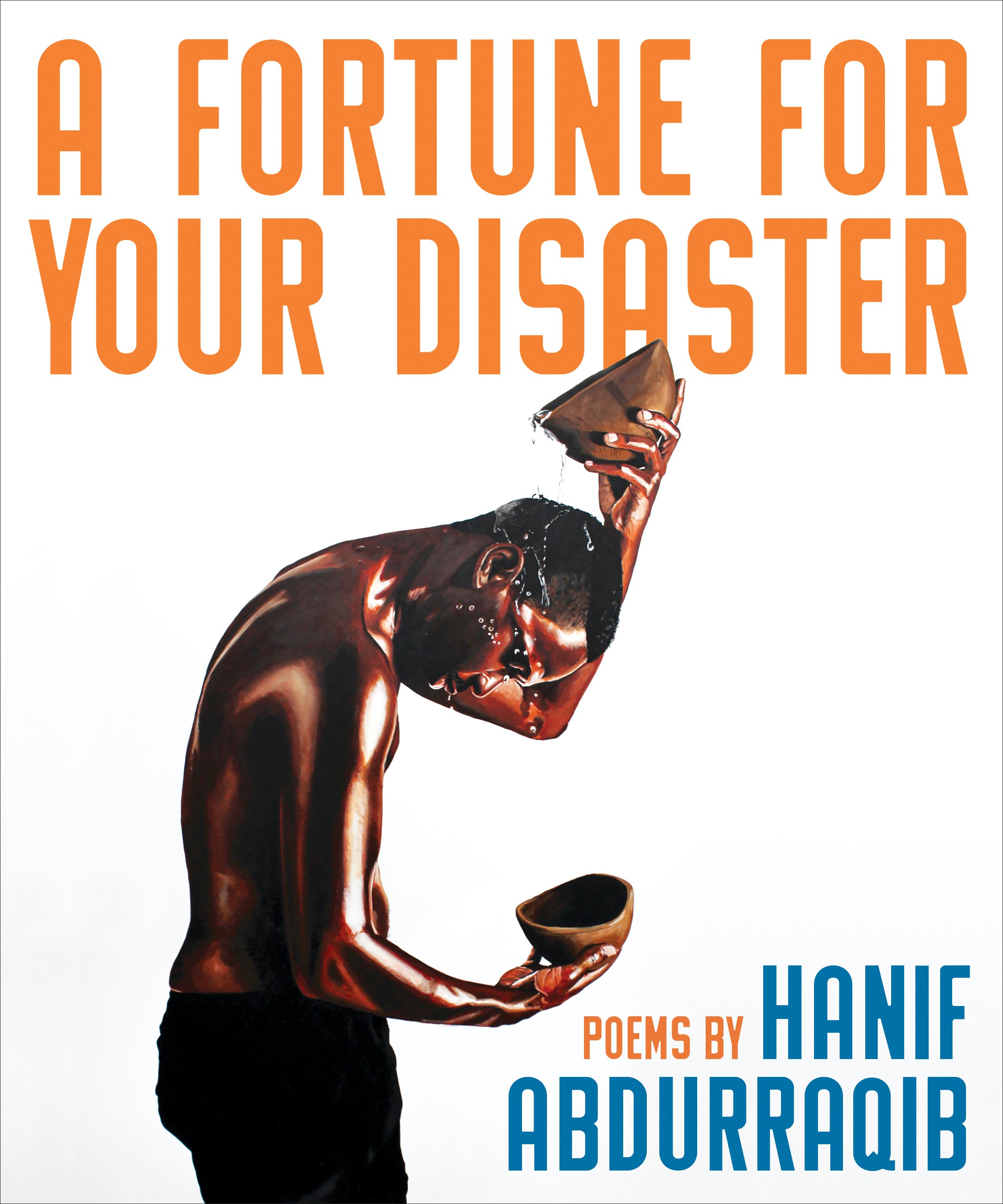
(Photo: Tin House Books)
A Fortune for Your Disaster by Hanif Abdurraqib (Tin House Books)
In his second collection of poetry, Hanif Abdurraqib explores loss, heartbreak, and the possibility of “fashioning / something pretty out of seeds refusing to make anything / worthwhile of their burial”—crafting beauty from grief even when a clean redemption narrative can’t be found. The well-known cultural critic mixes references to Marvin Gaye, Christopher Nolan’s The Prestige, ’90s hip-hop, and black poetry from the Harlem Renaissance to today. These poems are filled with surprises, from their eclectic titles to the voltas in their final lines. Abdurraqib can turn a poem about a flubbed pizza order into a meditation about the inevitability of breaking promises. “Isn’t it funny,” the poem concludes, “to vow that you will love someone until you are dead.” —Rebecca Stoner
Fentanyl, Inc. by Ben Westhoff (Grove Atlantic)
An information-packed work of reporting that traces the rise of designer drugs, including synthetic and/or more dangerous versions of weed, acid, and heroin, the last of which gives the book its title. Fentanyl, a synthetic opioid that’s chemically similar to morphine and heroin, is the top cause of fatal drug overdoses in the United States. The most illuminating parts of the book are those that reveal the business practices of Chinese labs that supply illicit fentanyl to U.S. dealers. These labs are a source of death and destabilization for our country, American officials say, while Chinese leaders contend that it’s on us to deal with Americans’ appetite for the stuff. —Francie Diep
September 10th
The Testaments by Margaret Atwood (Doubleday)
Forget what you saw on seasons two and three of Hulu’s The Handmaid’s Tale: Margaret Atwood’s official sequel to her 1985 dystopian novel is coming soon. Although Atwood’s publisher has released very few details about the contents of the new book—even the Booker Prize committee was unable to talk about it when rolling out its 2019 long list—rest assured that, at a time when reproductive rights are in jeopardy and the plight and costume of the handmaid has been taken on by protesters around the world, we’ll be watching. —Maris Kreizman
The Divers’ Game by Jesse Ball (Ecco)
For the past decade, the dystopian scenarios of Jesse Ball’s propulsive novels have been converging with reality in ways that feel more and more prophetic and urgent. His latest is set in a society where refugees are segregated from the general population and systematically dehumanized—sound familiar? The Divers’ Game uses fantastical frameworks to explore the very real consequences of what happens when the state indoctrinates its citizens to fear others. —Maris Kreizman
Homesick: A Memoir by Jennifer Croft (Unnamed Press)
In this elegant memoir, Booker-winning translator Jennifer Croft tells the story of the seizure disorder that beset her younger sister in childhood, the high-risk brain surgery to remove a tumor thought to be culpable, and the fragile relationship between her mother and sister that followed. A prodigy, the author enters college at 15, where she excels in language and literature but also at drinking and self-harm. When her sister runs away from home after surgery to visit her at college, the memoir takes an even darker turn, but Croft recounts her own trip back to the light with a lyrical assurance. Croft’s photographs, and the fragmented letter to her sister that weaves the whole book together, are not merely bonus features, but emerge by the end as the meticulous wind-up to a structural masterstroke. Homesick is a revelatory look at tragedy, family, mental illness, and how we make meaning together. It’s also the best answer to “why did you become a translator?” that I’ve ever read. —Ted Scheinman
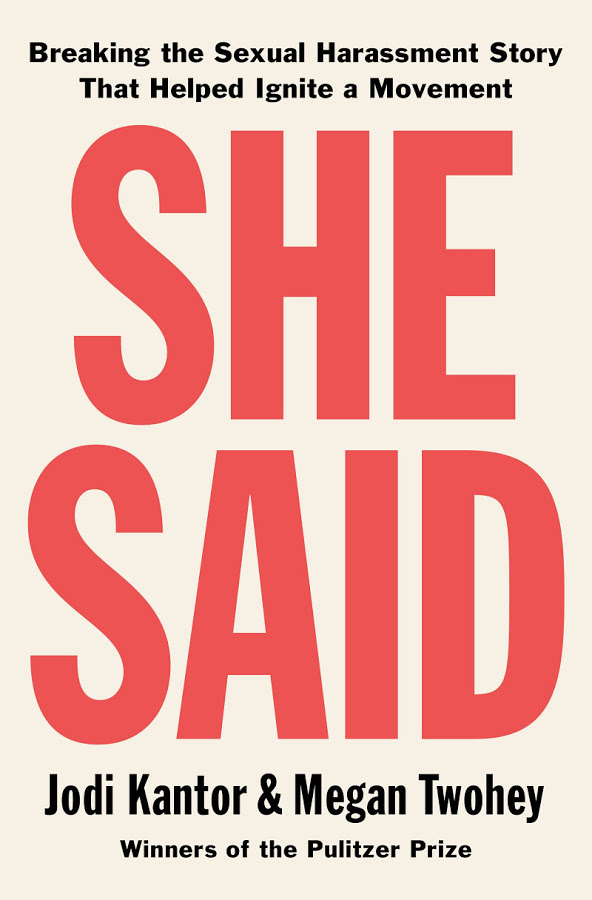
(Photo: Penguin Press)
She Said by Jodi Kantor and Meghan Twohey (Penguin Press)
It’s under strict embargo until its publication, but needless to say we’re excited to read the book that takes us inside the investigation that brought the #MeToo movement to the forefront of our culture. New York Times reporters Kantor and Twohey broke the news that Hollywood mogul Harvey Weinstein is an alleged rapist many times over and a consistent abuser of power. Their reporting has made workplaces across industries confront sexual harassment more thoroughly than ever before (faint praise!), and has prompted a time of reckoning—even if it’s only just begun. —Maris Kreizman
September 17th
The Seven Necessary Sins for Women and Girls by Mona Eltahawy (Beacon Press)
Mona Eltahawy is not having it: the patriarchy, that is. In The Seven Necessary Sins for Women and Girls, she lays out a blazing prescription for courageous and, well, necessary acts that liberate females and gender non-conforming people from the terrorizing, pervasive, self-perpetuating effects of the patriarchy. Each chapter takes an idea like anger, profanity, power, and lust, and reframes it as a virtue, repudiating cultural expectations that are framed by and designed to reinforce the power of the patriarchy, and encouraging readers to step outside of that paradigm altogether. —Jennifer Sahn
On Fire: The (Burning) Case for a Green New Deal by Naomi Klein (Simon & Schuster)
This February, when Democrats put forth a proposal for a Green New Deal, reporters sought to identify the deal’s intellectual forebears, among whom they noted Thomas Friedman, Jill Stein, and others who had advocated for government programs under that same, FDR-inspired name. Grist even dubbed Senator Bernie Sanders “the godfather of the Green New Deal.” Yet at the heart of the GND is a series of policies meant to transform the economy in ways that protect workers and the Earth at once, and the writer who’s been arguing for such policies most emphatically for the past 20 years is Naomi Klein. On Fire collects Klein’s essays, commencement addresses, and speeches across the Anglosphere from the past half-decade or so, each of them focused on the urgent need to create a healthier, happier, more livable world by rejecting the brutal logic of 21st-century consumer capitalism. Klein bookends the collection with an opening portrait of 16-year-old Swedish activist Greta Thunberg, “patron saint of pissed-off kids everywhere,” and a closing case for the GND that reclaims the economic argument from the right (the GND, Klein writes, will be “a massive job creator”). Klein’s clarifying skepticism about “the deep stories about the right of certain people to dominate land and the people living closest to it, stories that underpin Western culture,” has never been more valuable. —Ted Scheinman
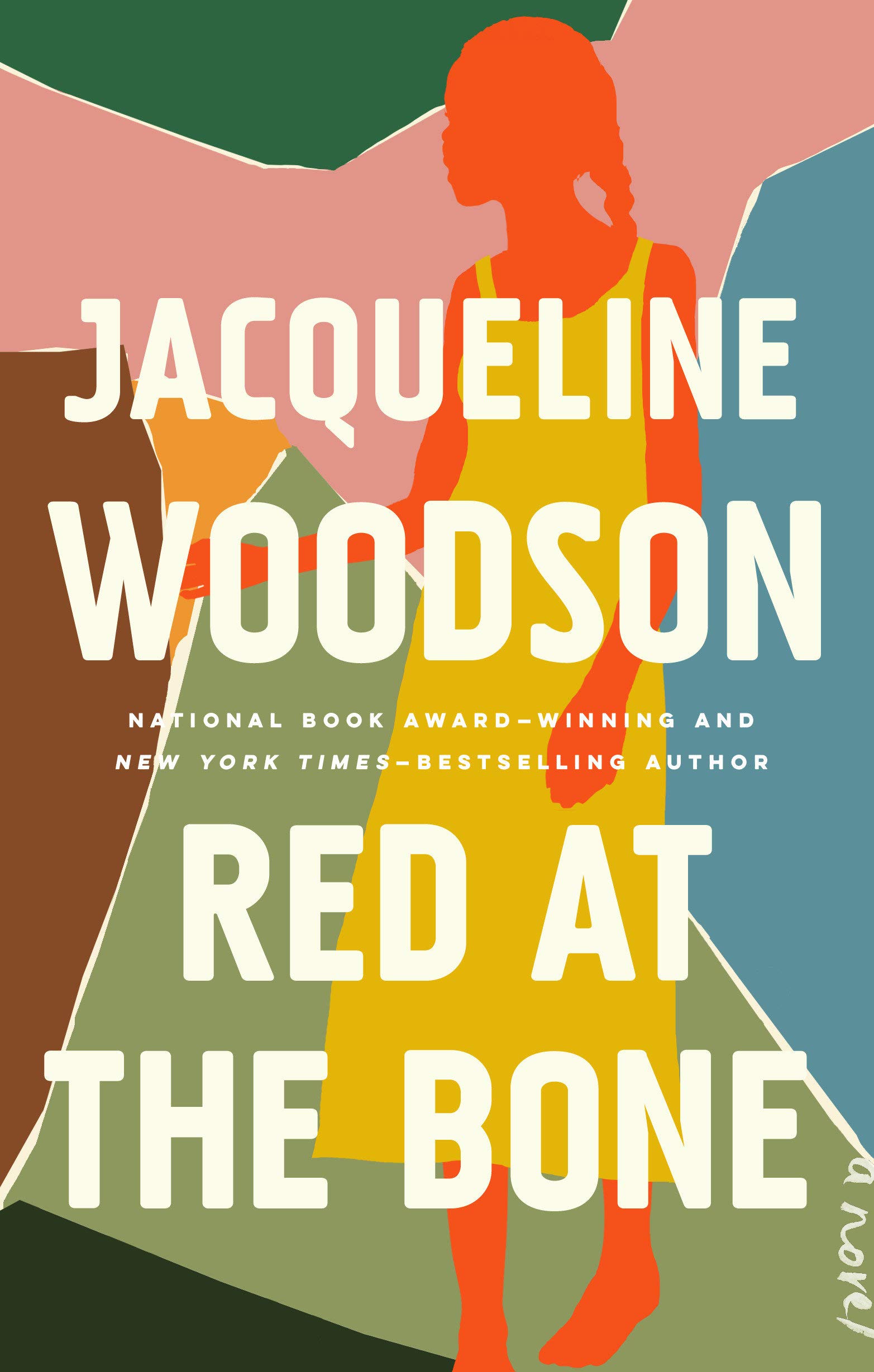
(Photo: Riverhead Books)
Red at the Bone by Jacqueline Woodson (Riverhead)
Jacqueline Woodson has a gift for finding the perfect sets of details and poetic turns of phrase to make her novels feel epic and expansive even when they weigh in at less than 200 pages. Woodson’s latest adult novel takes place in a Park Slope brownstone where 16-year-old Melody lives with her father and her grandparents, while her often absent mother makes occasional visits. Told from five points of view over three generations, Red at the Bone takes readers through the history of how the family arrived at this place, where race and class and family bonds determine who gets to pursue their dreams and who gets left behind. —Maris Kreizman
September 24th
Year of the Monkey by Patti Smith (Knopf)
In her latest memoir, musician and writer Patti Smith travels back in time to visit old friends, enters a dream state for some playful introspection, and chats with hotel signs and other inanimate objects about life’s wonders. Chronicling the year she turns 70, Smith wanders in and out of the Western hemisphere (and, in more heady moments, between metaphysical realms), commenting on her relationship to loss, and the growing pains that accompany loss, along the way. —Alexa Lee
The Dutch House by Ann Patchett (Harper)
A traditional novel in the very best sense of the word, Ann Patchett’s latest is an expertly plotted and paced exploration of regret and obsession over decades. The Dutch House begins in the Philadelphia suburbs in the 1950s, where siblings Maeve and Danny live in an extravagant home with their upwardly mobile father and their modest mother. When their mother leaves them and a classic wicked stepmother type moves in, Maeve and Danny find their lives literally and metaphorically uprooted in dramatic ways that leave them haunted by their past. —Maris Kreizman
Make It Scream, Make It Burn: Essays by Leslie Jamison (Little, Brown)
Tattooed in Latin down the arm of essayist Leslie Jamison is a line from the Roman playwright Terence that translates as: “I am human, nothing human is alien to me.” In her latest collection, even as she documents the experiences of others—Sri Lankan soldiers, Second Life superusers, eminent writers and photographers—Jamison is keenly aware of how her personal experiences shape the way she reports their stories. It’s this knowledge that propels the collection, along with her rejection of cynicism in favor of being open to new ideas and experiences, no matter how foreign they may seem. —Maris Kreizman
October 1st

(Photo: Red Hen Press)
Pigs by Johanna Stoberock (Red Hen Press)
On an island where the world deposits all its trash, far from civilization, a small group of children are in charge of feeding discarded plastics and electronics to six giant, magical, eternally hungry pigs. The grown-ups on the island take pleasure in drinking, dressing in evening wear at all times, and idly torturing the children when no other amusement presents itself. Johanna Stoberock’s second novel is a grotesque and luminous thriller with a big, swashbuckling allegory at its core, and Stoberock’s own magic trick is to populate the island with characters sufficiently rich to elevate the novel far beyond parable or admonition. It’s a beautiful book that I can’t wait to reread. —Ted Scheinman
Things We Didn’t Talk About When I Was a Girl by Jeannie Vanasco (Tin House)
“I want to hate him but I can’t,” writes Jeannie Vanasco in this searing, intimate memoir about her decision to confront a former friend who sexually assaulted her during their college years. In revisiting her confusion and ambivalence as much as her fury about the event (at the time, she told him she forgave him), Vanasco gets at so many of the gray areas in our conversations about rape and the rehabilitation of its perpetrators. If some traumas don’t fit into neat little narratives, then the pleasure of reading Vanasco is in knowing that messiness is OK, that there’s no right way to handle such betrayals. —Maris Kreizman
The Topeka School by Ben Lerner (Farrar, Straus & Giroux)
While Ben Lerner’s first two novels feature tight first-person narratives about young men who live deeply inside their own heads, his third novel expands the scope of his autofictional universe to make room for a few different perspectives. Spanning many time periods yet set mostly in Kansas in 1997, The Topeka School brings us into the lives of high school debate champion Adam Gordon and his parents, both of whom work at a supposedly comprehensive psychiatric clinic called The Foundation. Lerner is especially keen in depicting how the bizarre pageantry and idiosyncratic rules of high school forensic debates in the ’90s foreshadowed the ways in which contemporary discourse has devolved into absurdity. —Maris Kreizman
October 8th
How We Fight for Our Lives by Saeed Jones (Simon & Schuster)
Though the focus of this coming-of-age memoir is largely on the memoirist, tracing his tumultuous and confusing time growing up as a gay black man in the American South, the heroine of the story is inarguably his mother. A single mom working for Delta airlines, constantly scraping to cover the bills, she is always there in the background, trying to move mountains for her son. How We Fight for Our Lives reckons with the isolation Saeed Jones feels as teenager beginning to explore his sexuality, as well as the terror he feels moving through a world where some might prefer to see him dead. Poignantly, it is the early death of his mother, and the reckoning that follows, that ultimately free him to feel comfortable and confident in his own skin. —Jennifer Sahn
Burn It Down: Women Writing About Anger edited by Lilly Dancyger (Seal Press)
“My anger was a reasonable reaction to the experience of growing up in a country that hated women and encouraged women to hate each other,” writes Melissa Febos in “Rebel Girl,” her essay from the forthcoming anthology Burn It Down. For many women, anger is something we’re trained to contain or dissociate from. It’s an emotion characterized in the culture as a lapse of judgment, a condition that’s unpalatable to others and rarely reads as righteous. In this collection of essays, writers examine what it means to be angry while female (and angry while black, and angry while trans, and angry while queer, and so on). While anger is often weaponized against women to delegitimize them, this book gives powerful voice to women’s rage in all its glory. —Alexa Lee
Unfollow: A Memoir of Loving and Leaving the Westboro Baptist Church by Megan Phelps-Roper (Farrar, Straus & Giroux)
Growing up in Topeka, Kansas, Megan Phelps-Roper believed she was blessed with a perfect childhood—loving and involved parents, close siblings, and a strong sense of community at the church that her grandfather founded. It wasn’t until years later, after she’d severed ties with the extremist Westboro Baptist Church, that she came to re-evaluate her upbringing, and the homophobic and anti-Semitic rhetoric that pervaded her youth. In her memoir, Unfollow, Phelps-Roper sifts through decades of memories to confront her infamous Christian past, and explain what finally pushed her to leave her family and faith. —Alexa Lee
Confluence: Navigating the Personal and Political on Rivers of the New West by Zak Podmore (Torrey House Press)
Rivers are a powerful force in the American West, where water is often scarce and passionately fought over. Confluence, a book both deeply researched and deeply personal, is ostensibly about rivers, which Podmore navigates with the comfort and devil-may-care adventurousness of a life spent in desert canyons. But the book encompasses much more: It’s about communities (from the members of the Ute Mountain Ute tribe protesting the uranium mill in their midst near Podmore’s home in Southern Utah, to migrants moving across the U.S.–Mexico border), and it’s about life flourishing and floundering in the desert. Confluence is dedicated to Podmore’s mother, who raised him in the desert and died of cancer in 2014, and both his grief and his love of the landscape run through the book, lyrical and raw. “Were it not for the Colorado River, I might have been a rich man by now,” Podmore admits. But we as readers are richer for his love of rivers and the lands they run through. —Rebecca Worby
Grand Union: Stories by Zadie Smith (Penguin Press)
Zadie Smith’s first collection of short stories is as sad, funny, and finely tuned as you would expect. These stories, many first published in The Paris Review or The New Yorker, include vignettes about, and meditations on, migration and homeplace, racism passive and active, parenthood, what happens to old punks, and how to live as an artist when everyone around you is being so damn loud. There’s sci-fi and fantasy, and plenty of postmodern fuckery, but also more old-fashioned story styles that feel vaguely mid-century (“Big Week“). In “Kelso, Deconstructed,” Smith revisits the 1959 stabbing of Kelso Cochrane, a West Indian immigrant to Britain, with a mix of semiotic headiness and grounded poignancy. The excellence of the collection might be a given, but nearly every story here has something that will surprise. —Ted Scheinman
October 15th
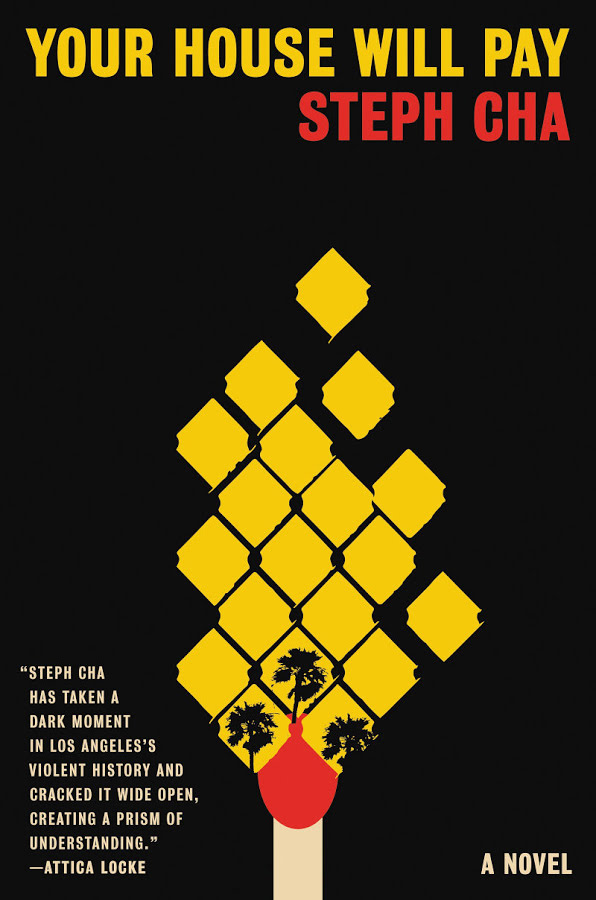
(Photo: Ecco Press)
Your House Will Pay by Steph Cha (Ecco)
Set during the Los Angeles riots of the 1990s and leading up to fictional yet all-too-real present-day protests in L.A. after a police officer has killed an unarmed black teenager, this compassionate crime novel by Steph Cha offers no easy answers for how to fight gross injustice. Instead, Cha’s story connects a Korean family with a black family, both of whom must grapple with the effects of a murder that has torn their communities apart. Your House Will Pay never downplays the impacts of racism and trauma, but Cha’s nuanced portrait of the two families in crisis sparks hope for the possibility of connection and mutual understanding, if not forgiveness. —Maris Kreizman
October 29th
Volume Control: Hearing in a Deafening World by David Owen (Riverhead Books)
“Our ability to deafen ourselves with daily activities has never been greater,” New Yorker staffer David Owen writes in Volume Control, a close look at the problems besetting the human ear, and at the remarkable strides we’re making in alleviating all sorts of aural distress, from early onset deafness to chronic tinnitus. Yet deafness of various degrees remains an important, and growing, public-health challenge. Owen’s writing and thinking about the nature of ears, sounds, and communication are lively enough that you don’t need to know someone suffering from deafness or tinnitus to find value in the book (though with 37 million Americans having lost some degree of hearing, you’re likely to know at least a few of them). The World Health Organization projects that a billion people on Earth will experience a disabling hearing loss by 2050, as the world grows louder and more populous—meaning that the concerns of Volume Control will remain relevant for decades to come. —Ted Scheinman
November 5th
Little Weirds by Jenny Slate (Little, Brown)
This collection of essays and stories by actress, comedian, and children’s book author Jenny Slate revels in the purple prose of everyday life: “When I imagine my ingredients, I imagine my that my muscles are made of plums, that my heart is a giant ruby with a lightbulb in it, that my blood is a goldenrod yellow, and the bones inside my body are made from lions’ bones and shells, and that my brain is made of steak and silk and Hawaiian Punch.” With the soul of a performer—even on the page—Slate shares charming fragments from her life, ideas about ideas, and fanciful fictions that are both delightfully absurd and deeply human. —Maris Kreizman
In the Dream House by Carmen Maria Machado (Graywolf)
Memoir is often an attempt to shape the various winding paths of one’s life into a discernible, tellable journey. In her forthcoming memoir, Carmen Maria Machado, the author of the genre-bending story collection Her Body and Other Parties, doesn’t take a direct route. She structures each chapter of her memoir around a different narrative trope, using many different methods of storytelling (“Unreliable Narrator,” “Choose Your Own Adventure”) to illuminate her experiences of living through an emotionally abusive relationship. In the Dream House is both innovative in its approach and nerve-striking in its subject matter. —Maris Kreizman
November 12th
Are Men Animals? How Modern Masculinity Sells Men Short by Matthew Gutmann (Basic Books)
The English expression “boys will be boys” has its roots in an ancient Roman proverb—which is to say, humans have been eager to excuse male misbehavior as innate for a long time. In Are Men Animals?, the anthropologist Matthew Gutmann interrogates this cliché, and offers a timely and thorough debunking of the idea that masculine behavior is determined purely by biology. Gutmann draws on his field research in the U.S., Mexico, and China to show that culture and economic class have as much if not more influence over our behavior than anything in our chromosomes. He spends much of the book arguing convincingly that, when we focus on biological explanations for male aggression and violence, our analysis will yield solutions that merely treat the symptoms of a much deeper, society-wide disease. Segregating men and women with women-only subway cars to combat sexual assault, for example, may lead to fewer assaults on public transit, but it doesn’t change the fact that some men feel entitled to grope women. —Kate Wheeling

Pacific Standard’s Ideas section is your destination for idea-driven features, voracious culture coverage, sharp opinion, and enlightening conversation. Help us shape our ongoing coverage by responding to a short reader survey.





